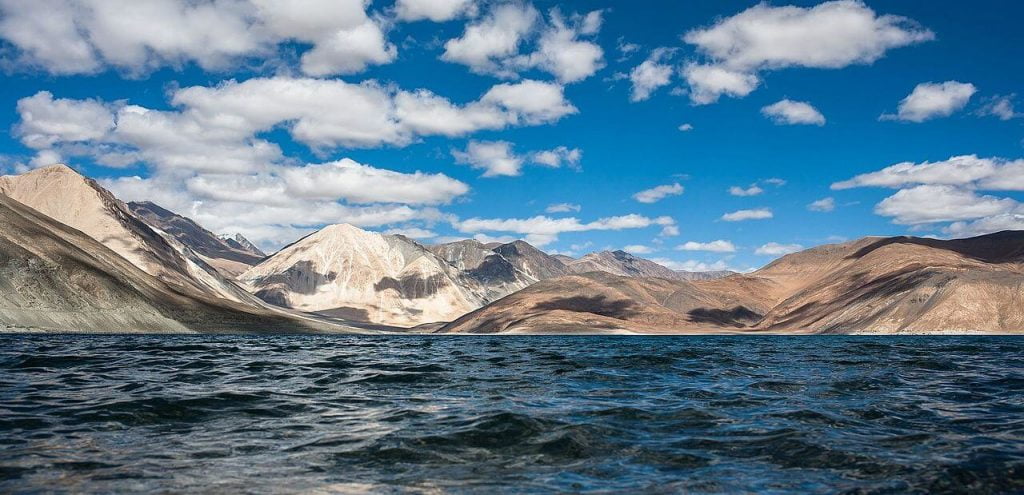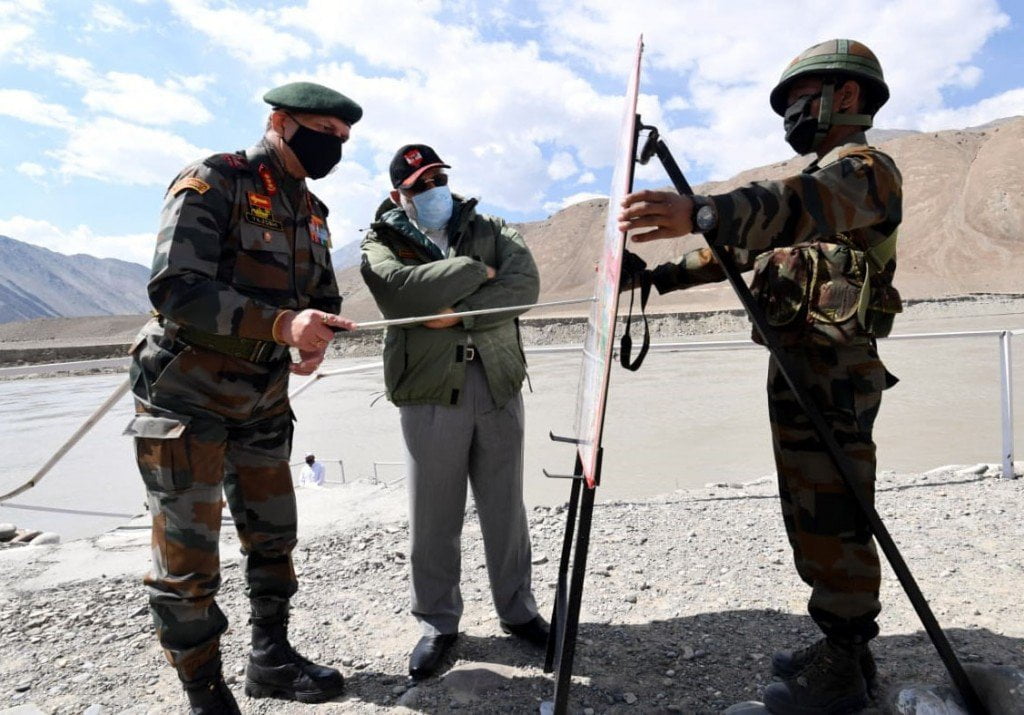India – China disengagement– temporary relief or lasting peace?

By

The Himalayas has rightly drawn global attention for the last few months, as India and China continued the build-up of troops in Ladakh, particularly at Pangong Tso, Chushul and Galwan Valley. The tensions have been the worst the region has seen for several decades, with fighting between Chinese and Indian soldiers in the month of Jun, over disputed Galwan valley that left 20 Indian soldiers dead and 45 Chinese fatalities as reported by the Russian news agency. Once again ‘warning shots’ were fired by both sides in September in the south Pangong Tso sector, after Indian troops pre-empted the Chinese troops by occupying the Kailash range heights. A small skirmish between the soldiers of the two armies again took place in Jan 2021 at Naku La in Sikkim.
India and China recorded a positive movement with both sides agreeing to work out a road map to address the remaining friction points. After the disengagement from Pangong Tso, the 10th round of talks between Indian and Chinese military commanders took place on 20 Feb 2021, to work out modalities of withdrawal of forces from the friction points at Gogra-Hot Springs and working out modalities for restoring full patrolling rights to the two sides in Depsang bulge area, south of Daulet Beg Oldie sector. It is felt that while Gogra and Hot Spring area could find a common meeting ground to resolve the issue; it is the Depsang area that will require more time and deliberate effort to find an amicable solution.
A meeting between our National Security Advisor and the Chinese Foreign Minister is also scheduled to take place to sort out the differing perceptions over the LAC. Clearly, the ball is in the Chinese court to create a positive atmosphere for taking the bilateral ties of the two countries forward. India has made it clear that it would stand up to any use of force by China, to alter the status quo. At the same time, India has also conveyed that it is willing to discuss and build a positive atmosphere for finding an amicable solution to the outstanding boundary issues.
A beginning has been made by rapid disengagement by both the armies in the Pangong Tso area as per the agreed terms and conditions. Reducing tensions at other friction points on mutually agreed terms and conditions will pave a way forward to reduce the trust deficit that both countries are plagued with.
Chinese Miscalculations
Why did China mass up such a huge build-up of forces and then decided to disengage from Pangong Tso after ten months of a stand-off? Does this disengagement mean an end to the hostile relations between India and China? Or is it just another addition to a long list of landmark standoffs that are yet to be negotiated?

China saw Covid-19 as a strategic opportunity to force India to accept a 1959 claim line along the LAC, which India had always rejected. They thought that the Indian economy was in a downturn and would not be able to sustain the expenditure involved in sustaining such a heavy concentration of troops along the LAC for a long time. Hence, they violated the existing agreement and wanted to change the status quo by show of strength. But India fought well against the virus as well as Chinese aggression. Chinese misjudged the Indian reaction and response. This time they faced a different Indian army than they faced in 1962. Occupation of the Kailash range by Indian troops was a masterstroke, which exposed the Chinese concentrations and deployments. India continued to increase the troop concentration to match the Chinese build-up of forces and displayed a strong resolve to challenge Chinese aggression. Neither China nor India wanted war. This is evident as in spite of being in an eyeball to eyeball contact for so many months, not a single round was fired by either side. India reorganised its strike corps to muster additional troops at the Ladakh border. Chinese knew that they had reached a stalemate, which was not in favour of China. They required some face-saving to withdraw their forces. They said that they want their troops back for the celebration of the Chinese centenary in Jul 2021. But they could not do so without entering into an agreement with India because of the fear that Indian troops may occupy the vacated areas. So, they entered into an agreement to withdraw the forces.
The military experts have been voicing their views on Indian television, saying that the tactical and strategic advantage that India gained by occupying the Kailash range forced the Chinese to come to the negotiating table. The army commander northern command said that deployment of tanks by India turned the tables from aggression to peace overtures. Some say that India military build-up along the Himalayas sent a clear signal to China that India will stand up against any force being used by China to alter the LAC. Some believe that China was wary of the capabilities of its soldiers to stand up against the well-trained Indian army soldiers.
According to some experts, Beijing’s decision to disengage from Pangong Tso starting on February 10 was not because its military positions were not tenable but to stop the downward spiral in bilateral relations since former Western Theatre Commander, General Zhao Zongqi, went on the aggressive mode in May 2020. The rapid disengagement indicates that the instructions have come from the highest level in Beijing. After the military standoff in May 2020, India had taken a lot of economic measures to sever trade ties with China. More than 100 Chinese apps were banned on the pretext of national security. Indian railways cancelled Rs 471 crore deal with a Chinese firm. BSNL was instructed not to use gear from Chinese firm Huawei for network upgrade due to military standoff. The government also made it compulsory for all products to have a country of origin to identify Chinese-made products. India has also placed imports of colour television sets under the restricted category and air conditioners under the prohibited category. The Chinese experts had criticized the Indian Government’s actions on the above aspects, which eventually led to a souring of relations between the two countries.
At a diplomatic level, India has not left any stone unturned to acquaint its friendly countries with the expansionist attitude of China not only in the Himalayan region but also in the South China Sea, Taiwan, Vietnam, Japan, Indonesia and other neighbouring countries. The formation of QUAD to counter the Chinese aggression in the South China Sea along with the alliance of the USA, Australia, Japan and India has also discouraged China from aggression against India. This is the first time that complete synergy was seen in the political, diplomatic and military front on the Indian side.
What India Should do
Will this disengagement pave a way to better the strained ties between the two counties? The trust deficiency is so deep that it should make us careful and not buy Chinese bonhomie ever after. Chinese would try to convince us to keep the boundary dispute and bilateral relations separate. We should not fall into this trap again. Relations can only improve once the boundary dispute is settled once for all. The LAC should be replaced by a proper boundary so that there is no question of differing perceptions. Chinese will try out new tricks. It would be naïve to believe the Chinese ever. They have time and again gone back on their agreements and they can do so even in future. Therefore, we should not lower our guard against China.
China is also busy in forming a string of pearls around India by instigating our neighbours like Nepal, Bangladesh, Srilanka and Myanmar. Pakistan is already a confirmed stooge of China which is reeling under debt and a poor economy. China is using its economic power to use these neighbours against India. We should continue to mend our strained relations with these neighbours by building trust and accommodating their concerns. Also, these countries should be made to realise that how China exploits its economic power to get small nations into a debt trap and influence the country’s decision-making policies to its advantage.
Myanmar is under unrest after the military regime took over on 01 February 2021. China is likely to use this opportunity by offering a helping hand to the military regime and use it as another stooge against the interest of India. We have boundaries of four northeastern states with Myanmar (Mizoram, Manipur, Nagaland, and Arunachal Pradesh). Though the insurgency in our northeastern states is under control at present, support to these insurgent groups by China with the consent of Myanmar cannot be ruled out. Therefore, we need to keep a close watch over the situation and deter Myanmar from falling into the Chinese trap.
It is absolutely clear that China is our biggest threat. Also, China respects a powerful neighbour vis-a-vis a weak neighbour. Pakistan in collusion with China also poses a threat. All our actions should be to negate this threat. A two-front war is a reality and our all actions should be to prepare for this worst-case scenario.
We should continue with capacity building by modernising our armed forces at a faster pace. The armed forces need modern weapon systems to phase out the old ones. Our deployment of forces in Ladakh should continue to thwart any evil design of the Chinese armed forces. The air force should be upgraded to 52 squadrons to meet the challenge of a two-front war. We need to build up our navy to match up and have better control over the Indian Ocean. More aircraft carriers and submarines are required to build naval capacity.
We should continue to build our infrastructure on the border areas at a faster speed to negate the Chinese advantage to build up their forces faster than us. The Chinese threat is real and all our efforts should be concentrated to mobilise our forces at a faster pace.
Striking a balance between development and defence priorities is a tough act even in the best of times. India’s defence problem cannot be solved by the ministry of defence (MoD) alone; it requires the whole government approach in which both civil and military stakeholders need to eschew their stubbornness. The government must commit to prioritising defence expenditure in line with future threat projections, even if it means that government expenditure in other areas needs to be rolled back. At present, the defence expenditure is around 1.8% to 2% of the GDP. The defence budget needs to be enhanced to 5% of the GDP to meet the enhanced threat requirement of the country. This may require certain tough decisions like cutting down subsidies in some sectors due to national interest.
We should continue our efforts to mend our relations with China on the diplomatic front without giving any concessions on the economic front. The trade relations should only improve once the borders are settled with a permanent solution. We should not get lured by the present disengagement to open our economic relations with China. At the same time, our efforts for a self-reliant India should continue and at the same time, we should offer an alternative investment opportunity to the rest of the world to move them away from China as an investment destination. We need to make India a manufacturing hub of the world.
China is likely to pump the insubstantial amount of money to fund the Pakistan military against India as well as equipping the PLA for the same role. If China commits a Himalayan blunder against India on the lines of 1962, India should escalate the conflict into the naval sphere besides land and air. If there is a united response from the Quad members in the Indo-pacific region, the outcome could well be not 1962 but 1971. China should think twice before foraying into this misadventure, which could result in embarrassment.




